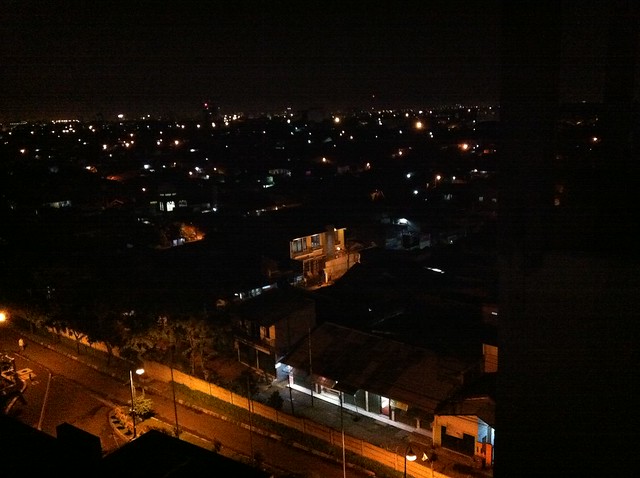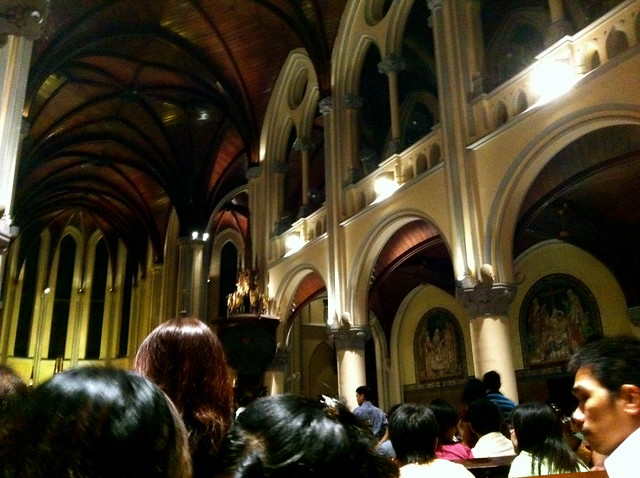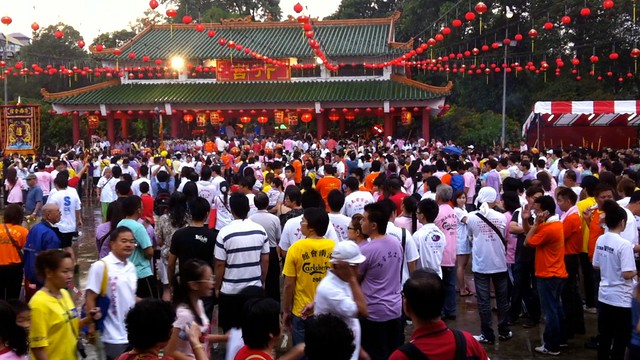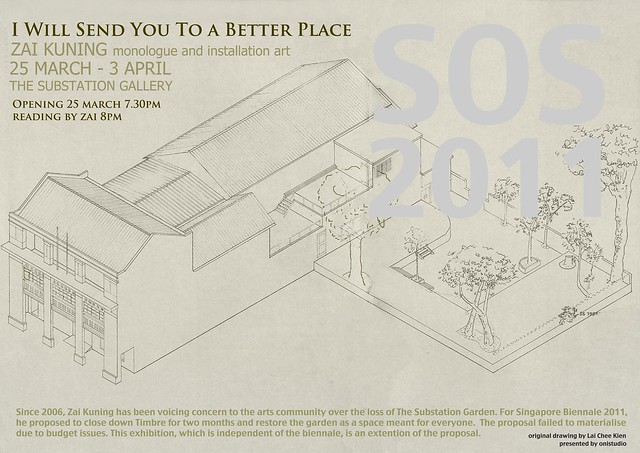
onisstudio: Since 2006, Zai Kuning has been speaking passionately about the lost of the Substation Garden, which has been disconnected from the arts centre itself ever since Timbre Group opened its first food and beverage outlet. The arts community's response towards the lost of the iconic tree, the changing landscape around The Substation, and the community it used to gather varies from nostalgia, ambivalent pragmatism to resentment.
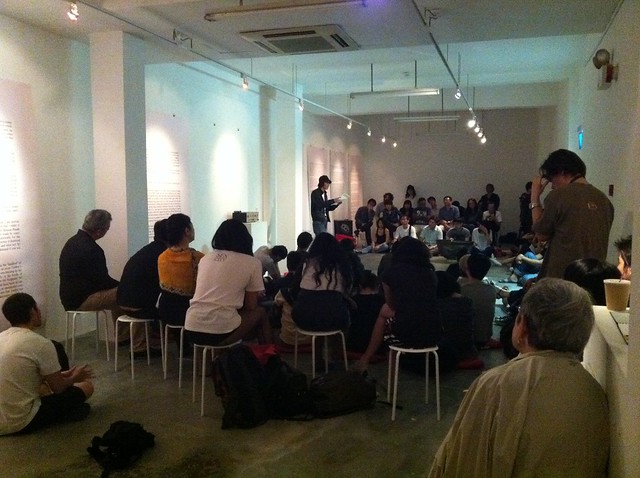
Commissioned for a work for the Singapore Biennale (SB) 2011, Zai proposed to close Timbre and return the garden to the arts community for the period of the Biennale. However, the proposal failed to materialise. Bearing in mind Kuo Pao Kun's words " great failure is more worthwhile than mediocre success', Zai conceived this exhibition and monologue as a response to the failed project, focusing on his personal experience and thoughts about the Garden, the Substation, and his conversation with Matthew Ngui (director of SB 2011).
I want my garden back because I miss the tree
Its 4pm now but the garden is lock and the tree is as
lonely as me
I want my garden back because I miss the tree
And now they have turn the garden to be so ugly
Im feeling sad and angry for the garden and how we use
to play freely
- Zai Kuning's open letter to the artscommunity, 2006
Zai Kuning's Recorded Monologue (partial recording)
Zai Kuning's Speech (25 March 2011)
Zai, thank you for giving this speech. I hope you do not mind but I have recorded it almost in full because I think this is one thing particularly worth documenting and more people should be able to hear this. The situation with Timbre and the Substation Garden is something that is close to my heart as well, as it also can be said that I "found myself" at Substation.
One day during my secondary school days I was leaving the now demolished National Library when I heard the strains of music coming from someplace nearby. I followed the sound and I found a bunch of local bands playing at the back of the Fat Frog Cafe of Substation... and in the years following that chance encounter, I always seemed to go back to the Substation.
The first gig I organised was also at the Substation; my first foray into design work was also working with Moving Images (I was trained only as a writer, but this first stab at doing visual work has more or led to me working professionally as a designer now, many years later). My first solo exhibition was also held at The Substation last year under the auspices of their visual arts open call - I am ever grateful for the opportunity and their support of my work. I would not have had the space or resources to produce my work about the Singapore River if not for the Substation.
Space is always important here because there is so little of it. While I am not homeless, I work on my own independently and this takes me to many different offices and different places in a single day, and this sometimes feels like I'm some sort of refugee. I am often moving through town carrying all sorts of ridiculous amounts of equipment and books (and constantly picking up more and more). Sometimes in the lull between meetings and the going-ons, I try to look for a harbour at which to shelter at for a while. But over the years, these "meeting spots" have gotten fewer and fewer, with the loss of things like winfood and four face buddha. These days I don't know where to go. Sometimes even when nothing is happening at the Substation I actually end up walking there and sitting there alone on whatever bench or chair that has been left outside.
Which I always think is a great pity. Sometimes even in the short moments of rest, great things can happen. Practically all of my closest friends today are the product of random encounters, walking around places. How would these connections have been made without the spaces in the city where people meet? I wish for more spaces in which people can sit and meet and create things without being pressured to buy something, or to consume something. A neutral space, like you said.
What can we do to get back the garden?
A passage i like from Constant's "Another City for Another Life":
"The crisis in urbanism is worsening. The layout of neighborhoods, old and new, conflicts with established patterns of behavior and even more with the new ways of life that we are seeking. The result is a dismal and sterile ambience in our surroundings.
In the older neighborhoods, the streets have degenerated into freeways and leisure activities are being commercialized and corrupted by tourism. Social relations become impossible. The newly built neighborhoods have only two all-pervasive themes: automobile traffic and household comfort — an impoverished expression of bourgeois contentment, lacking any sense of play.
To meet the need to rapidly construct entire cities, cemeteries of reinforced concrete are being built in which masses of the population are condemned to die of boredom. What is the point of all the extraordinary technical inventions the world now has at its disposal if the conditions are lacking to derive any benefit from them, if they contribute nothing to leisure, if imagination is absent?"
See also:
Mayo Martin: We RAT on Zai Kuning and his invisible Biennale work!
The Substation

